
Cactus Around Las Vegas, Vegetation Around Las Vegas
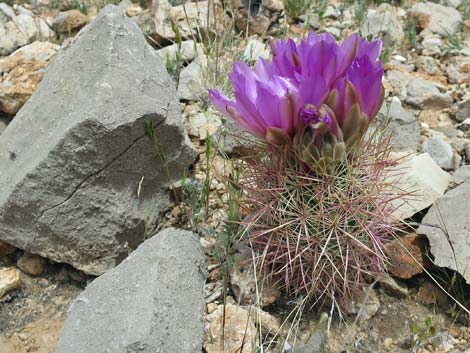 |
General: Johnson's Fishhook Cactus (Echinomastus johnsonii), also called Mojave Pineapple Cactus, is large for a fishhook cactus, usually growing to about the size and shape of a pineapple with long, red spines. This species usually blends into the background and goes unnoticed, but in evening light on rocky hillsides, the red spines can catch the sunlight and light up as if the hillside were covered with bright, shiny red balls. Johnson's Fishhook Cactus generally is an uncommon component of vegetation communities on well-drained sandy, gravelly, and rocky soils on bajadas and moderate slopes into the lower mountains in the Upper Sonoran (Mojave Desert Scrub) life zone. Although it is uncommon, it can be locally abundant. Family: Cactus (Cactaceae) |
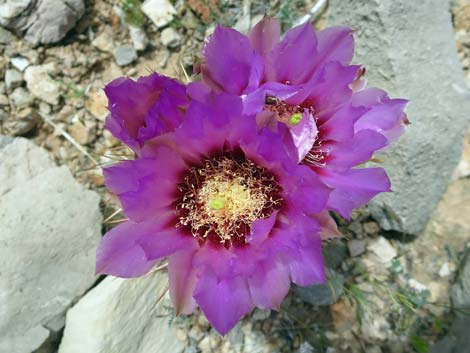 |
Other Names: Mojave Pineapple Cactus, pineapple cactus, devil-claw, Echinocactus johnsonii, Sclerocactus johnsonii. Plant Form: Usually one upright stem with many long, dense spines (somewhat resembling a pineapple). This species can have multiple stems and multiple heads. Height: To about 10 inches. Trunk: None. Stems: Single, cylindrical stem; 2 to 4-inches in diameter. Stem Surface: Ribs (17 to 21) with distinct tubercles. Spines: Central: 4-8. Radial: 9-10. Yellowish to reddish. Spines long and stout. |
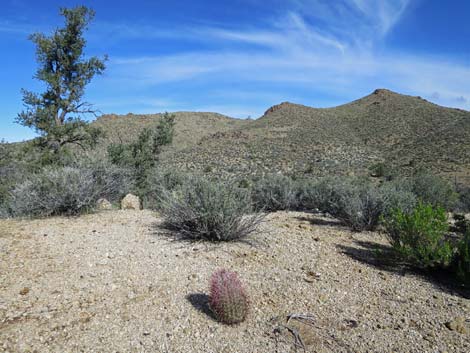 Johnson's Fishhook Cactus in the mountains of southern Gold Butte |
Glochids: Absent. Flowers: Blooms in late spring and early summer. Flower greenish yellow, pink, or magenta; 2 to 3-inches in diameter. Fruits: 1/4 to 1/2-inch long, 1/10 to 2/10-inch in diameter. Seeds: Many, small, black. Habitat: Dry, well-drained sandy, gravelly, and rocky soils on bajadas and moderate slopes in the lower mountains. Distribution: California to southwestern Utah and northwestern Arizona. Elevation: 1,500 to 4,000 feet. |
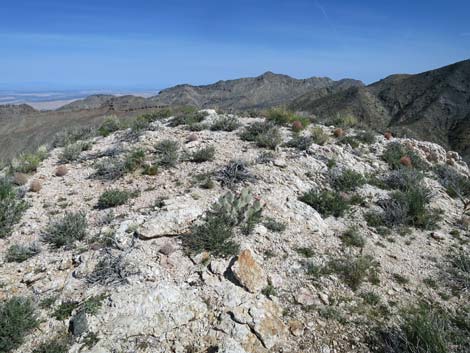 Johnson's Fishhook Cactus in the mountains of northern Gold Butte |
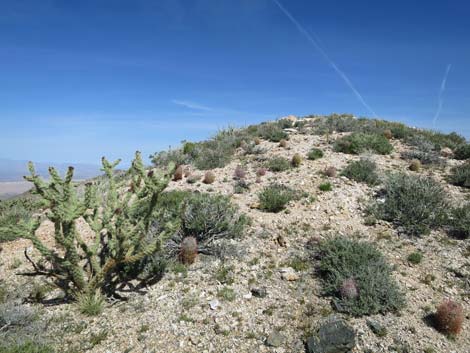 Johnson's Fishhook Cactus in the mountains of northern Gold Butte |
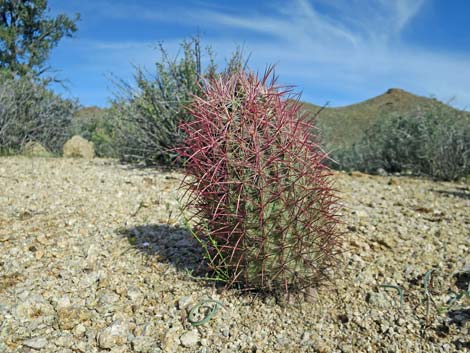 Johnson's Fishhook Cactus in the mountains of southern Gold Butte |
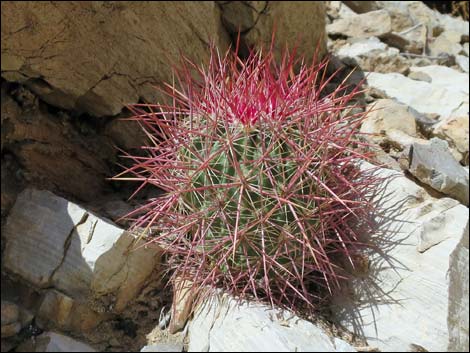 Pudgy, little Johnson's Fishhook Cactus |
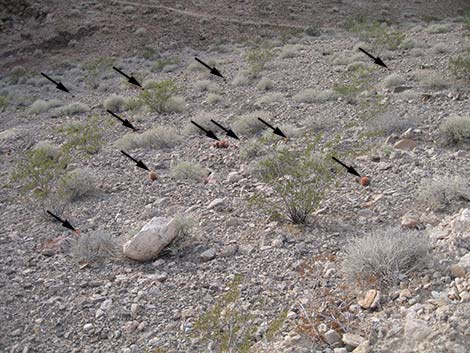 Locally abundant population |
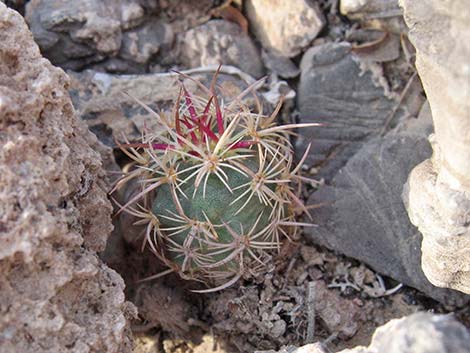 Sprout about 1-inch tall |
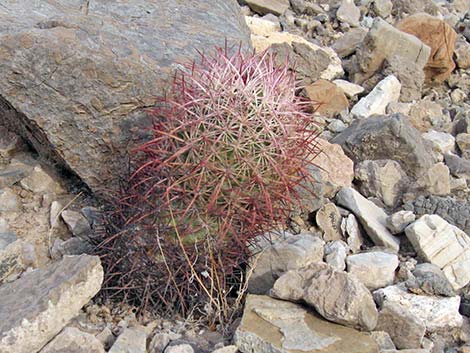 Johnson's Fishhook Cactus -- side view |
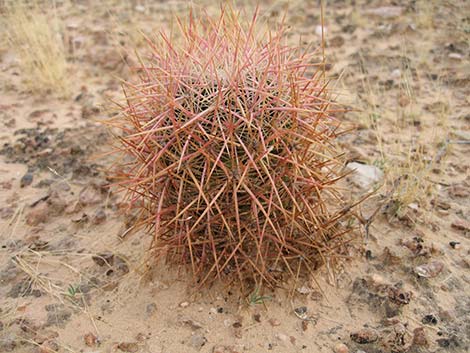 Johnson's Fishhook Cactus -- side view |
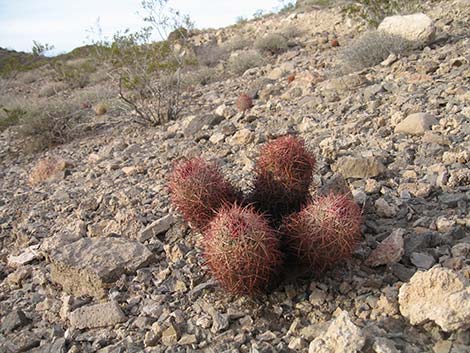 Four-stemmed Johnson's Fishhook Cactus in habitat. |
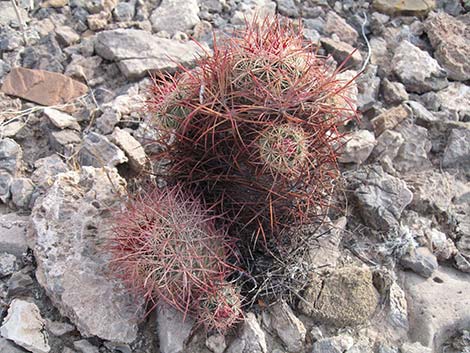 Johnson's Fishhook Cactus with many heads |
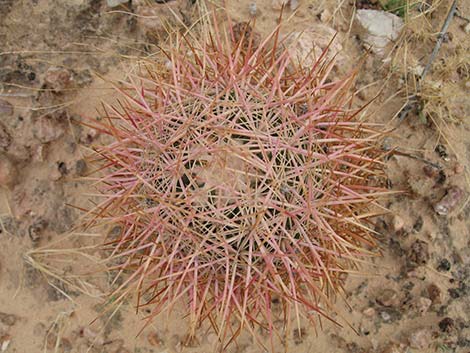 Johnson's Fishhook Cactus -- top view |
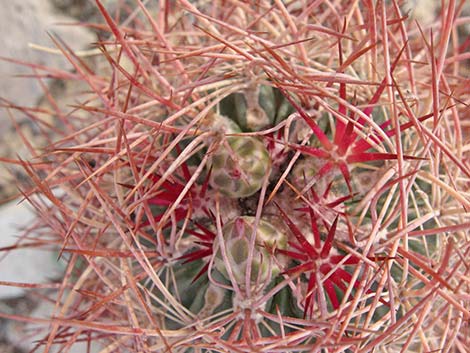 Flower buds at the top of the stem |
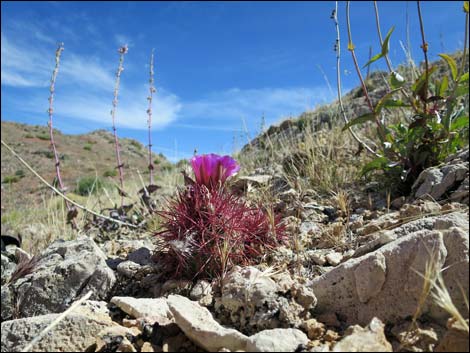 Johnson's Fishhook Cactus with a flower |
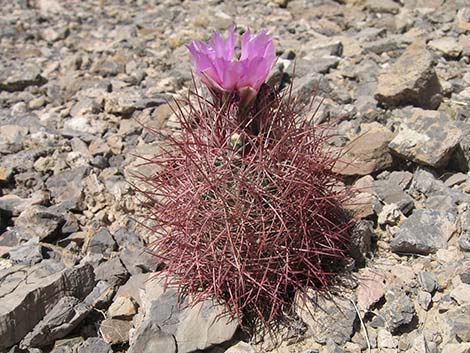 Johnson's Fishhook Cactus with a flower |
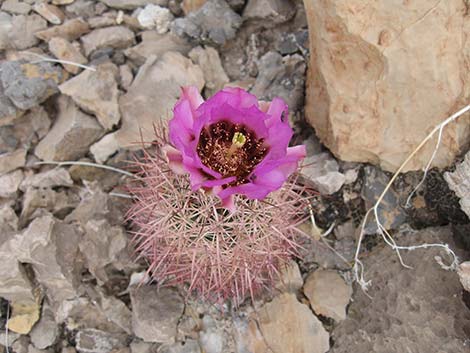 Johnson's Fishhook Cactus with a flower |
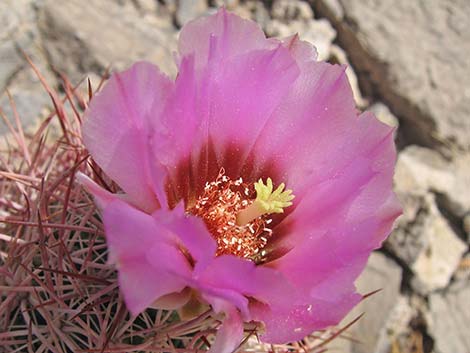 Johnson's Fishhook Cactus with a flower |
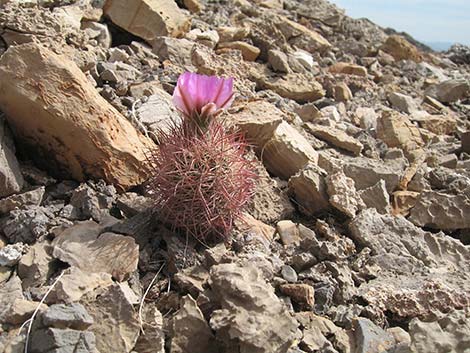 Johnson's Fishhook Cactus with a flower |
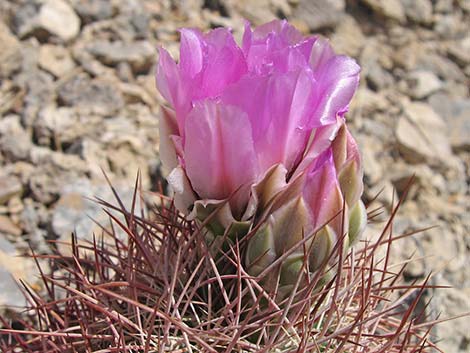 Flower and buds |
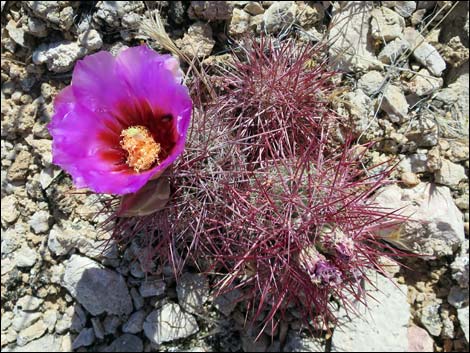 |
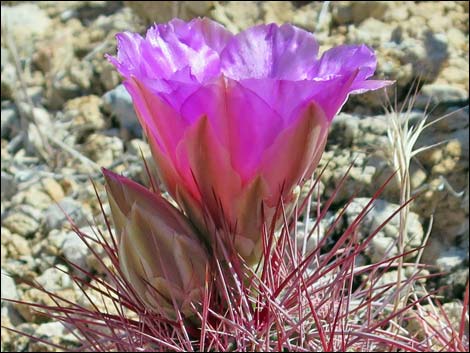 |
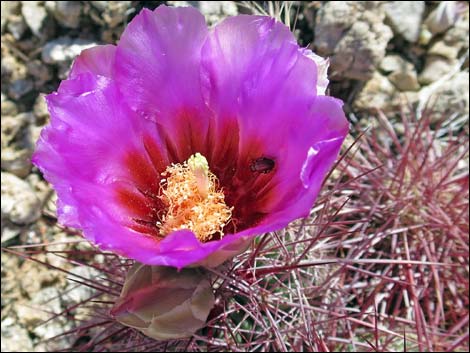 |
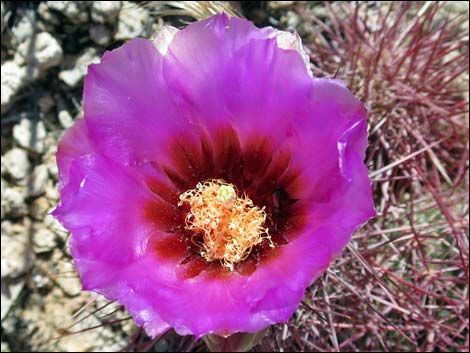 |
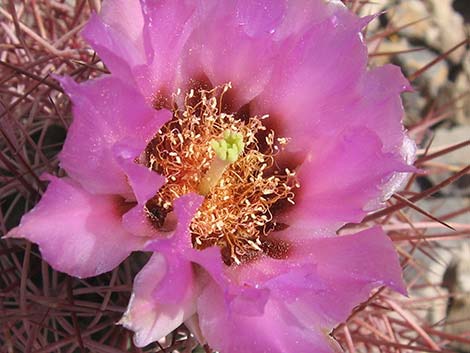 Johnson's Fishhook Cactus flower |
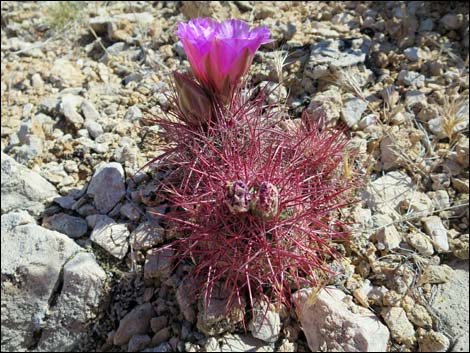 Johnson's Fishhook Cactus with fresh and spent flowers |
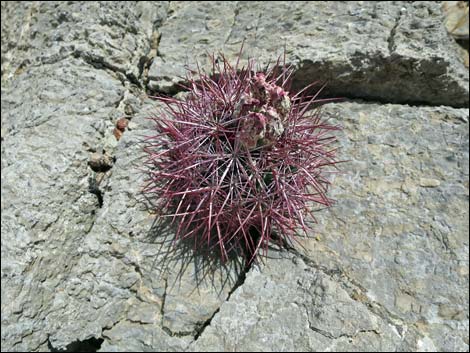 Johnson's Fishhook Cactus with spent flowers |
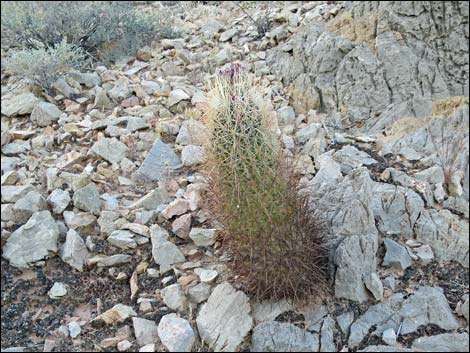 Johnson's Fishhook Cactus with spent flowers |
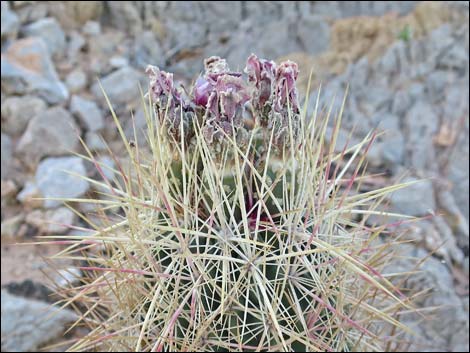 Johnson's Fishhook Cactus with spent flowers |
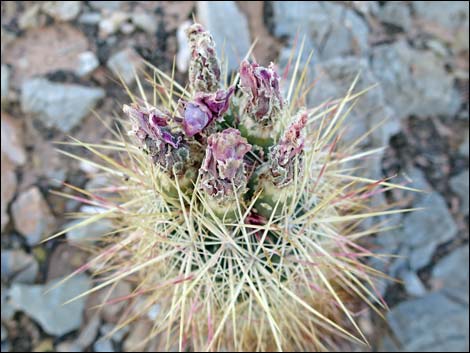 Johnson's Fishhook Cactus with spent flowers |
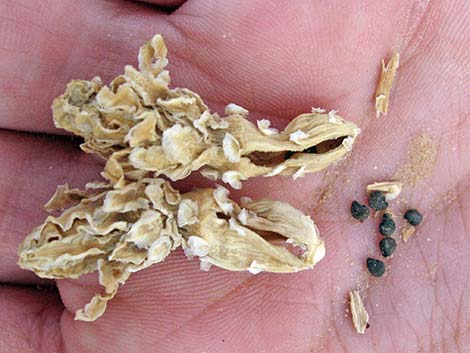 Dried fruit and black seeds |
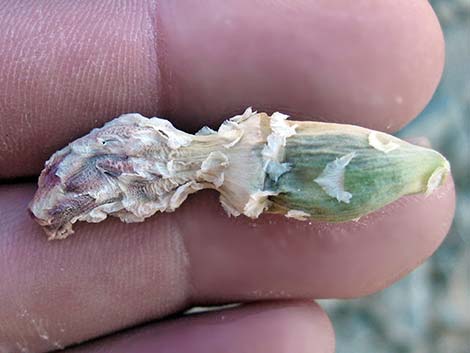 Dried fruit |
Note: All distances, elevations, and other facts are approximate. Names generally follow the USDA database.
![]() ; Last updated 211218
; Last updated 211218
| All Cactus | Plant Species Index | Glossary | Copyright, Conditions, Disclaimer | Home |